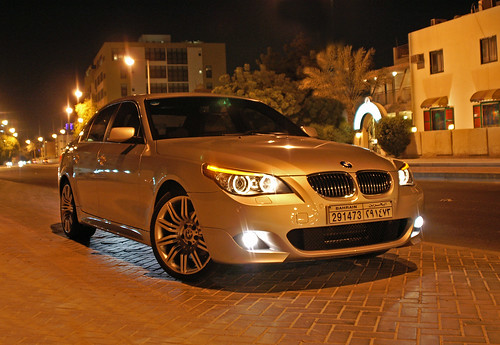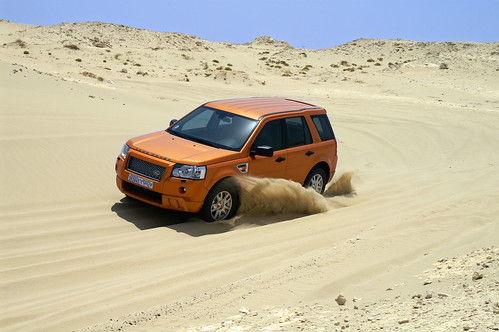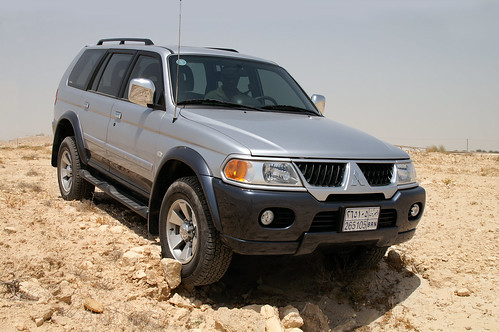This is Dodge’s baby for 2007 which started off as a concept SUV.

By Tushal Bhadang
Four-by-four’s are darlings of the
The Nitro is available in two V6 engine variants (3.7 litre and 4 litre), the car we had for test had a transverse mounted Magnum 3.7 litre 205 hp easy-going motor which leisurely revved to a peak of 5200 RPM. But the torque of 314 Nm@4000 RPM is what this motor is all about, it pulls away like a train, but a lot of its own body weight seems to bog it down. The motor only starts howling over 4000 RPM. Though even at city speeds, the exhaust note is deep, clearly announcing your arrival. Power delivery is smooth but the four-speed gearbox is a let down, it just doesn’t shift up or down as quickly as you’d want it to. Throttle response is sluggish as well, though once spanked; it goes like a scalded cat. All the torque can be put to particularly good use for towing and the Nitro has a small button that transfers all the juice to the rear wheels for best traction when towing. A tow hook has to be attached separately. Weighing in at 1.8 tons it wanted to swing its heavy rear out at turns, so we had to be careful. The long wheelbase of 2770mm is good for straight line stability but increases the turning radius to 12 metres. 210mm ground clearance is just about acceptable.
She is a respectable off-road vehicle with a part-time 4WD transfer case that can be switched via a dash mounted knob. In regular driving, 2-wheel-drive with the power going to the rear wheels, the steering feels light and ride quality is soft and bouncy. Even small indents on the road surface make her bob all over the place. The same suspension is very comfortable off the black, absorbing even the worst surfaces without a hitch. So it is more suitable for off-roading than on the road. As you sit high up, the visibility is extremely good and reversing is not an issue either, as there are no thick pillars to obstruct vision, though parking sensors would’ve been a bonus.
Our Khaki coloured Nitro had khaki interiors, khaki dash board, khakhi cloth seat covers, khaki door trim, everything in a variant of Khakhi! The only bright spots being the chrome garnish on the shift knob and cleverly designed door release latches. A single disc DVD/CD/MP3/WMA player is standard (no video display screen) with six speakers. The foot wells are illuminated and steering is adjustable for rake. The dashboard is flat in design and short people may have some ergonomic problems with having to reach out to all the switches. A triple-barrel speedo is attractive and backlit in white while the highly tactile buttons are backlit in green. Interior fit and finish is overall good but very rugged in design and feel. This makes the car feel brawny, women, are you reading this?
It features a Load 'n' Go, a cargo storage system whereby the rear seats and front passenger seat fold totally flat in seconds; additionally, the cargo floor slides rearward out over the rear bumper, and can hold 181 kgs, making the loading of heavy objects much easier and prevents back injuries and it still manages to sit five passengers in comfort.
The Nitro comes equipped with four airbags for the front passengers and disc brakes on all four wheels. ABS, EBD and ESP are standard through out the model range. Additionally, a tyre pressure monitoring system does a system check on start up and warns appropriately. Part of the problem with the bouncy on-road ride quality can be directed towards the 16” steel wheels, though an optional 20” rim is available in R/T trim, we’re assuming it will handle better with larger rims. Our Nitro came with 235/70 R16 off-road rubber.
The Nitro is the first mid-size SUV from Dodge, and has all the Dodge character. It's built on the platform of the future Jeep Liberty, and actually feels bigger than its size. People would buy this car for the boxy but attractive looks and if it wasn’t for the low extended chin (we got sand into its teeth a few times), it would do even better off road. On the road, we felt it handled better with the 4WD engaged, it won’t take you through
Rating 3 stars
Car supplied by Behbehani Bros.,

























